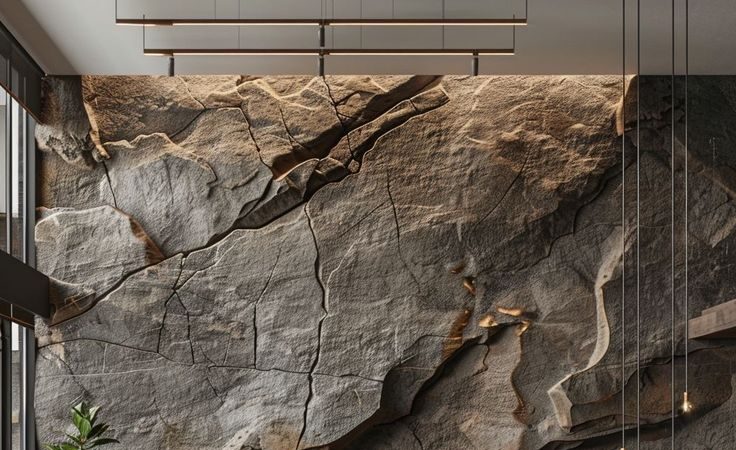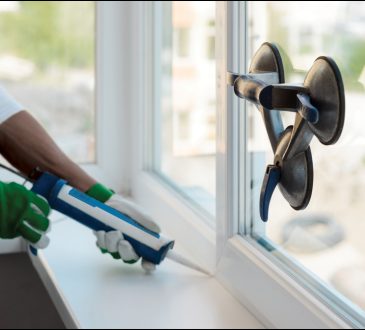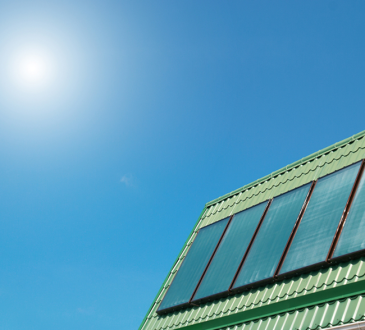
The latest wave of stone veneer technology is reshaping how architects and builders think about wall design, from speedy installation to performance-driven envelopes. In 2025, designers are leveraging lighter assemblies, richer textural finishes, and high-efficiency cladding to deliver crafted results with fewer trade-offs. If you’re comparing options for a project, Check Now to see how the right veneer specification can compress timelines and elevate aesthetics without inflating budgets. The Stone Veneer Catalog has evolved beyond a simple lookbook; it’s now a strategic toolkit that connects material science with design intent. Below, we map the innovations, finish strategies, and hybrid material palettes defining this year’s most compelling interior and exterior walls.
Lightweight stone veneer innovations improving installation speed
Weight reductions across modern veneers are accelerating project delivery while preserving the tactile authenticity of quarried stone. Advances such as fiber-reinforced backers, honeycomb substrates, and precision kerfing have pushed many assemblies below 10 pounds per square foot, unlocking efficiencies in both shipping and handling. For contractors, lighter panels mean smaller crews, fewer lifts, and less staging area—critical advantages for tight urban sites and high-rise retrofits. The Stone Veneer Catalog now routinely includes panelized kits with factory-mitered corners, so installers spend less time fabricating on site and more time setting square footage. And because these systems are engineered to be repeatable, schedule risk drops as crews gain predictable, hour-by-hour productivity.
Faster workflows with panelized systems
Panelized veneer systems merge cladding and finish into pre-configured modules, aligning factory precision with field speed. Instead of hand-setting small pieces, crews hang larger, pre-assembled sections using clip rails or concealed anchors that lock into standardized patterns. This transition reduces on-wall layout time, cuts wet trades, and minimizes shutdowns due to weather, which is particularly helpful for shoulder seasons. When combined with digital shop drawings and numbered crate sequencing, panelized packages create a clear path from truck to wall, ensuring fewer mistakes and nearly zero rework. Builders increasingly cite smoother inspections, as factory QA records accompany deliveries and verify that tolerances, fire tests, and fastener specs meet code before a single panel goes up.
Lightweight formats also open opportunities for interior renovations where structural load reserves are tight or where substrates can’t tolerate heavy anchoring. Veneer sheets in the 3–6 mm range, laminated to composite backers, can span over existing drywall or masonry with minimal prep, keeping tenants in place during phased work. Adhesive-set kits with mechanical safety pins provide extra assurance in high-traffic corridors without requiring deep fasteners that penetrate utilities. On exterior elevations, reduced dead load means smaller brackets and fewer thermal penetrations, translating into cost savings that can be reallocated to premium finishes. Across the board, the theme is clear: lightness multiplies speed without diluting craft.
Textural finishes enhancing both interior and exterior appeal
Texture transforms stone from a background surface into a dynamic, light-catching element that changes throughout the day. In 2025, demand is high for tactile finishes—split-face, bush-hammered, raked, and flamed—that read strongly from the street while offering subtlety up close. Designers are pairing these with honed or leathered inserts to tune reflectivity, dialing in a comfortable visual rhythm for lobbies, feature walls, and facade bands. The Stone Veneer Catalog helps make side-by-side comparisons practical by showing finishes under controlled lighting and at multiple scales, which is crucial for predicting how joints, corners, and window returns will perform. When you specify texture strategically, you can anchor wayfinding, scale tall elevations, and hide minor soiling patterns without sacrificing elegance.
Balancing maintenance and tactile richness
Not every environment can support deeply textured surfaces, so an honest maintenance conversation belongs in the spec. Split-face limestone may deliver the rugged, biophilic feel a client loves, but in a coastal exterior it might trap salt and require a different sealing regimen. Meanwhile, a lightly raked granite can offer similar shadow play with less debris accumulation and easier cleaning. Indoors, leathered finishes on darker stones are trending for their soft sheen, which hides fingerprints better than high polish in reception spaces and elevator lobbies. Pairing these surfaces with intentional lighting—wall grazers for drama, diffuse ambient light for calm—lets the finish do the heavy aesthetic lifting without over-illuminating.
Finishes also influence acoustics and human comfort. Rougher textures scatter sound, taking the edge off reverberation in double-height spaces, while honed fields maintain a refined base note for branding or artwork. Exteriorly, flamed and brushed stones increase micro-roughness and improve slip resistance for plinths, seat walls, and stair treads—details that make code compliance feel considered instead of forced. The Stone Veneer Catalog increasingly labels coefficient-of-friction data and recommended sealers by finish, making it easier to confirm suitability before procurement. With this information at hand, teams can navigate trade-offs—visual impact, cleaning frequency, and tactile experience—without last-minute substitutions.
Energy-efficient cladding options reducing thermal loss
Performance-driven veneers now complement building envelopes rather than working against them, with components designed around continuous insulation (CI) and ventilated cavities. Thin stone formats reduce structural demands while enabling stand-off brackets that minimize thermal bridging through the wall. Behind the veneer, a ventilated rain-screen assembly allows air to move, equalizing pressure and drying incidental moisture—a straightforward way to preserve R-value and extend facade life. Paired with high-performance weather barriers and properly gapped furring, these assemblies make energy modeling outcomes more reliable from design through commissioning. For specifiers comparing systems, Check Now to verify that proposed anchors, clips, and fasteners include published thermal-break data and have passed relevant fire tests.
Detailing that makes performance measurable
Great envelope performance is built in the details: properly sized drainage gaps, sloped flashings at every penetration, and WRBs with robust tape systems that tolerate real-world movement. Using nonconductive thermal isolators at bracket connections can cut heat loss at those points by a meaningful margin, and some suppliers publish psi-by-psi calculations to help engineers justify selections. Vapor-open air barriers let walls dry toward the exterior, while properly sealed interior planes prevent conditioned air from escaping—both essential to meeting the intent of energy codes without overinsulating. Stone Center’s technical sheets increasingly show section-by-section build-ups that stack veneer, vent space, insulation, and sheathing into repeatable, code-ready details. When envelope and finish are designed as one, the wall behaves predictably in all seasons and across decades.
Sustainability metrics are also getting sharper, moving beyond R-values to address carbon, durability, and maintenance. Thin veneer inherently lowers transport-related emissions and reduces quarry waste, while high-albedo light stones on sun-exposed elevations can help mitigate heat gain. Combine this with smart shading—deep reveals, fins, or screens—and you can fine-tune solar loads without extra mechanical complexity. The Stone Veneer Catalog often lists regional sourcing and available Environmental Product Declarations, so teams can weigh aesthetics against embodied impact and maintenance cycles. The result is a system that looks refined on day one and performs consistently through warranty and beyond.
Mixing natural and engineered veneers for design flexibility
Hybrid wall strategies—combining natural stone with engineered veneers like sintered stone or high-performance porcelain—are expanding the designer’s toolkit. Natural materials carry unique veining and mineral sparkle that convey luxury and permanence, while engineered options supply large formats, tight color control, and slimmer weights for challenging substrates. On interiors, designers might push natural stone to eye-level touchpoints and turn to engineered slabs for monolithic shower surrounds or food-safe kitchen walls that need fewer joints. Outside, a granite base can deliver impact resistance at grade, with lightweight porcelain panels above to keep cladding loads modest. The Stone Veneer Catalog now cross-references thicknesses, anchoring methods, and finish pairings to help teams stitch these materials into one coherent narrative.
Strategies for cohesive palettes
Pulling off a hybrid scheme depends on establishing hierarchy and rhythm early. Start with the “hero” stone—often a natural selection whose veining or fossil inclusions anchor the concept—then support it with engineered surfaces that echo hue and value without competing for attention. Mind thickness transitions: if your natural veneer is 30 mm and your engineered panel is 12 mm, plan for built-out substrates or recessed fields so surfaces flush out cleanly. Likewise, align joint logic; a natural ashlar pattern can step down into larger engineered panels if module dimensions share a simple ratio that preserves continuity. Details like consistent reveals, matched corner geometry, and shared trim profiles unify the look and prevent the facade from reading as a patchwork.
Acoustics, lighting, and durability reinforce cohesion when the palette gets complex. Engineered slabs can take direct sun and resist staining in café zones, while natural stone at seating height offers warmth and tactility that encourages touch. Use lighting to manage reflectivity differences, shifting from grazing on textured stone to softened ambient light on satin or matte engineered panels. For exterior wall stacks, choose colorways that respond to local context—warmer limestone hues in traditional districts, cooler quartzites or slates for contemporary urban blocks—then integrate engineered material where large spans or tight corners demand it. Referencing the Stone Veneer Catalog during mockups ensures that adjustments happen before procurement, saving time and reducing the risk of mismatched dye lots.
Architectural wall design trends defining 2025 projects
This year’s most notable walls reconcile craft with constructability, embracing a clarity of line while honoring tactile depth. Expect more large-format thin panels on clean, gridded substrates, interrupted by intentional bands of rugged texture for contrast and scale. Curved and faceted surfaces are returning as digital fabrication normalizes complex geometries, and flexible veneers make gentle radii achievable without custom quarrying. Color stories lean into warm neutrals—creams, beiges, and muted taupes—balanced by charcoal or deep green accents for grounded sophistication. To browse materials aligned with these movements, the Stone Veneer Catalog offers contextual photography, test data, and edge-detail diagrams that preview the built result.
Where innovation meets code and budgets
As codes evolve, trend-forward walls must satisfy stricter fire, wind, and seismic criteria, especially on mid- and high-rise exteriors. Tested assemblies—NFPA 285 compliance for the stack-up, AAMA standards for rain-screen performance—are increasingly table stakes for approval, and suppliers are responding with complete, documented packages. Fabrication is moving off-site, with DfMA and prefabricated facade cassettes compressing schedules and shifting labor to controlled environments; veneers that integrate cleanly into these platforms are winning specifications. Interiors follow suit: demountable wall systems dressed in stone veneer support churn-friendly workplaces and tenant improvements without sacrificing a crafted atmosphere. If you’re weighing these options, Check Now to compare lead times and logistics windows so procurement aligns with field readiness.
Sustainability threads through every trend, from local quarry sourcing to smart detailing that extends service life. Designers are mixing reclaimed stone inserts with new veneers, adding character while reducing footprint and telling a material story that resonates with users. Expect more transparent data: environmental disclosures, warranty terms mapped to maintenance regimes, and clear repair pathways that keep walls looking fresh for the long haul. In the end, the projects that define 2025 will be those that pair aesthetic intent with evidence-backed performance, delivering spaces that feel enduring yet agile. Keep the Stone Veneer Catalog close during schematic design and design development; it’s the rare resource that bridges inspiration with buildable specificity—and when you’re ready to compare options side by side, Check Now to validate availability, finishes, and tested assemblies before you lock in your spec.




